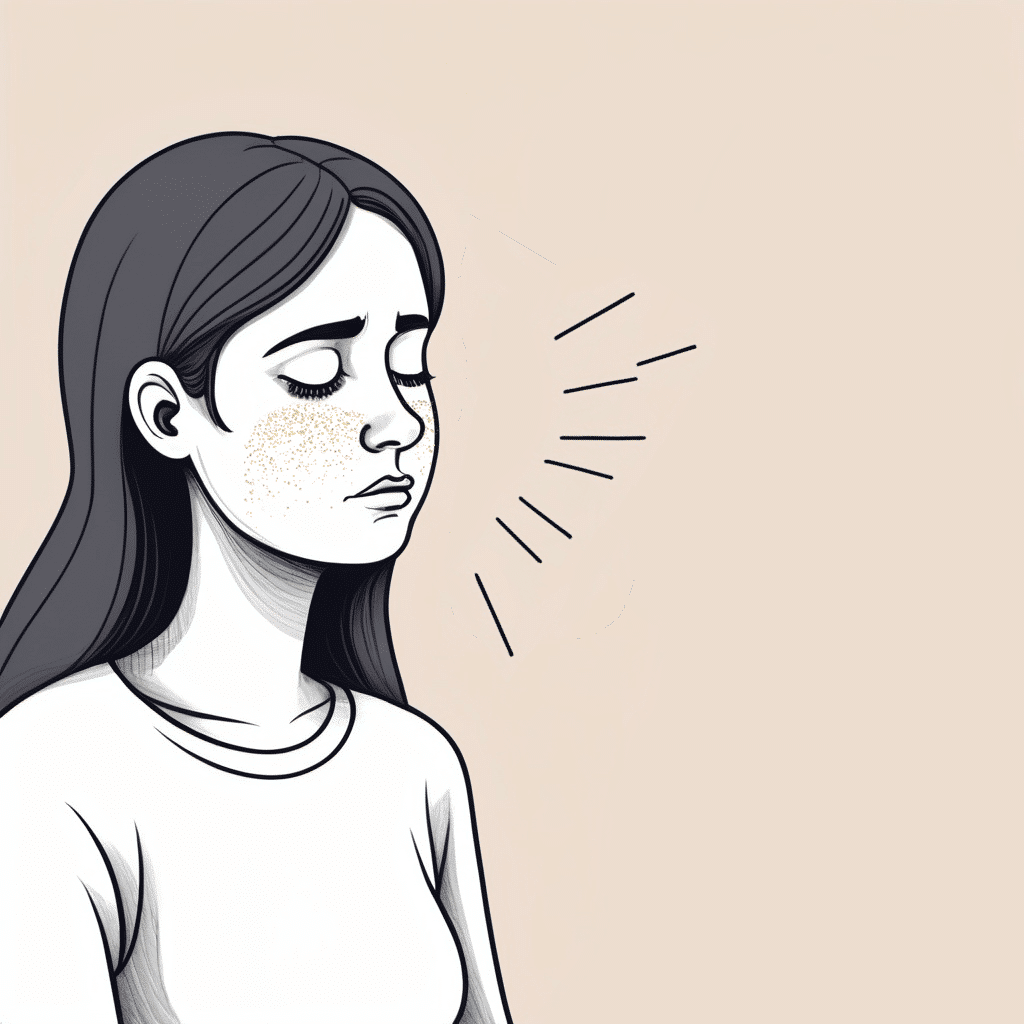Our face is an essential social vector, reflecting our identity and indicating our emotional state. When this is altered, the image of ourselves reflected in the mirror no longer reflects how we see ourselves. How can we live successfully when skin diseases disrupt our appearance? Skin disorders are more than just an aesthetic problem: they can also affect our mental well-being, self-confidence and social interactions. This article explores the most common skin conditions, their symptoms, causes and treatments.
Acne
Frequently seen in teenagers, acne manifests itself as pimples, blackheads and oily skin, mainly on the face and upper body. In 90% of cases, acne developed in adolescence disappears without treatment before the age of 25. The cause is inflammation of the pilosebaceous follicle, which contains a hair and a sebaceous gland that increases its production and thickens it. A bacterium naturally present on the skin, Propionibacterium acnes, then proliferates, leading to acne lesions. Comedones, papules, pustules, nodules and cysts can proliferate, causing acne ranging from mild (oily skin with few pimples), moderate (pimples on more than half the face), severe (large numbers of pimples all over the face with few nodules) to very severe (great inflammation and large lesions all over the face).
To combat acne, a healthy lifestyle is essential. The dermatologist will advise local treatment (cleansing, moisturizing and anti-acne treatment), sometimes combined with medication (antibiotic, hormone or zinc). Isotretinoin, which stops sebaceous gland activity, may be considered in certain cases.
Rosacea
Affecting around 3% of the population, rosacea causes redness and bumps on the face, often in fair-skinned people after the age of 30, with a peak at menopause for women. It’s a chronic disease of the small vessels of the face, which can take several forms, from simple redness with sensitivity to thickening of the skin with dilated pores and the appearance of protuberances. Eye involvement (dryness and photophobia – hypersensitivity to light) is not uncommon.
Rosacea can be treated with a variety of medications: vasoconstrictors to reduce the size of blood vessels on the skin’s surface, thereby reducing redness; anti-inflammatories, anti-parasitics, or effective acne treatments. Laser treatments have also proved effective
Eczema
A chronic inflammatory disease, eczema is characterized by itching and skin lesions that can appear all over the body, and sometimes on the face. Its onset is linked to a family history, and its genetic origin results in high levels of antibodies that respond strongly to allergens in the environment (pollen, dust mites…), as well as dry skin without a protective oily film.
Eczema manifests itself in flare-ups with periods of remission. In addition to dry skin, there is intense itching and skin lesions (redness, raised skin with blisters that ooze and then form scabs). Local treatments can be used to reduce inflammation and restore the skin’s natural barrier, or to modulate the immune system to alleviate symptoms. In severe cases, phototherapy may be proposed. Therapeutic management (given the impact of stress on symptoms) or environmental adaptation may also be considered.
Psoriasis
Evolving in flare-ups, psoriasis can cause scaly patches on the body, including the face and scalp. Usually benign, psoriasis can also be associated with joint pain (psoriatic arthritis), severely affecting quality of life. Like eczema, it evolves in flare-ups interspersed with periods of remission. Psoriasis is an inflammatory disease caused by the accelerated renewal of epidermal cells: just three days compared with a month under normal circumstances. As a result, the skin becomes thicker, leading to scaly patches (loss of small skin cells). Many factors have been identified as causing this disease: a genetic predisposition, but also environmental factors (sun, friction) and psychological factors (stress, trauma).
Local treatments such as corticosteroids or vitamin D3 can be used to reduce inflammation and itching. In severe cases, phototherapy or puvatherapy can be used in conjunction with more severe general treatments. Therapeutic management (given the impact of stress on symptoms) or environmental adaptation may also be considered.
Age spots
What are commonly referred to as “age spots” are actually lentigines, and have nothing to do with skin ageing: they are caused by repeated unprotected exposure to the sun. Lentigines appear several years after exposure to the sun, whether sunburned or not. The most exposed areas, such as the face, hands and décolleté, are ideal for their development.
The mechanism is simple: melanin, responsible for tanning and protection from the sun, accumulates in certain areas and is no longer eliminated. Without treatment, lentigos do not disappear spontaneously. Lentigos are benign, but if brown spots appear in isolation, more than a centimetre in diameter, or evolve in color, size or texture, don’t hesitate to consult a dermatologist. Treatments can include acid-based creams, lasers, or a depigmenting peel to progressively eliminate the spots.
Every skin condition needs to be monitored by a dermatologist, and an ophthalmologist if the ocular sphere is concerned. Appropriate care not only improves physical appearance, but also the psychological well-being of those affected.
To remember:
- The skin conditions most frequently found on the face are: acne, rosacea, eczema, psoriasis and age spots.
- These illnesses are benign but have a strong impact on our comfort and self-perception.
- Depending on the condition and its severity, local, oral or laser treatments can be implemented by a GP and/or dermatologist.
Sources :
- French Society of Dermatology. Acne. Website: Dermato-info. Paris; 2019
- French Society of Dermatology. Couperose and rosacea. Website: Dermato-info.fr. Paris; 2019
- French Dermatology Society. Atopic dermatitis. Website: Dermato-info.fr. Paris ; 2021
- French Society of Dermatology. Psoriasis. Website: Dermato-info.fr. Paris; 2019

